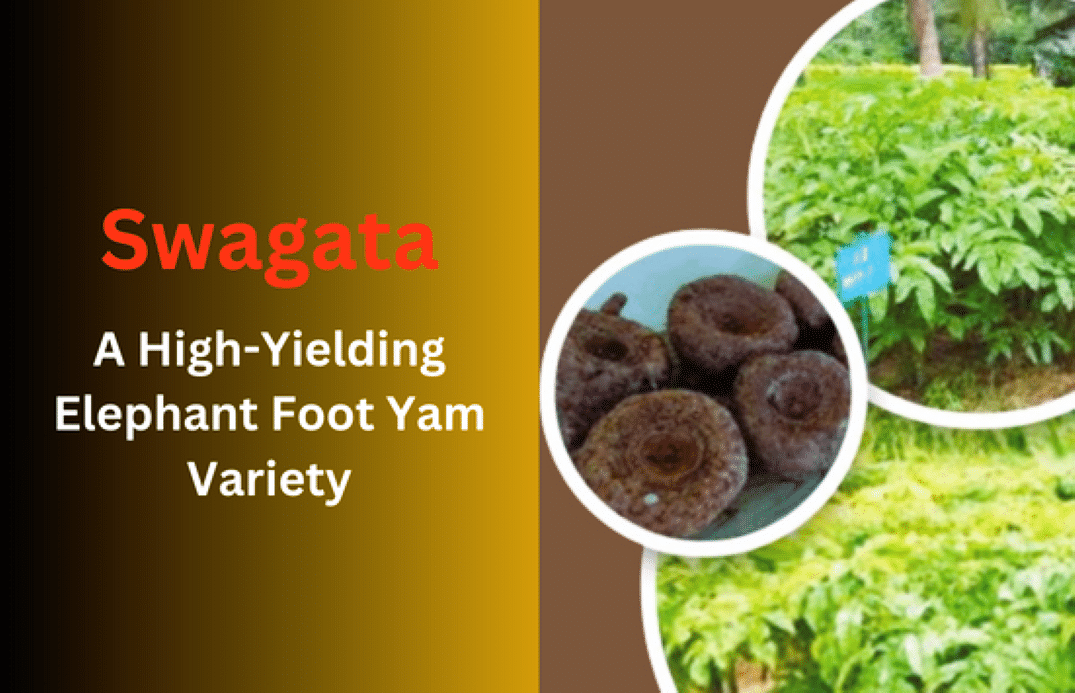
Elephant foot yam (scientifically known as Amorphophallus paeoniifolius) is a tropical perennial vegetable native to Southeast Asia. It is valued for its underground corm, which serves as a staple food across many regions due to its nutritional richness. The corms of elephant foot yam are not only rich in vitamins A, phosphorus, and calcium but also possess medicinal properties. They are used in traditional medicine to treat various ailments, including asthma, piles, and dysentery.
Journey of Swagata: From Germplasm to Elite Genotype
Navsari Agricultural University initiated a crop improvement program focusing on elephant foot yam, aiming to identify superior varieties for tribal farmers in Gujarat. Through rigorous evaluation and clonal selection, the elite genotype Swagata emerged.
Characteristics and Traits
Morphological Features
Swagata exhibits a stout upright pseudo stem with distinct rachis patterns. The corm is elliptical with a brown epidermis, while the flesh is light orange. Its inflorescence is terminal and notably large.
Yield Potential
This variety falls within the medium maturity group, ready for fresh consumption within 170-180 days post-planting. Swagata boasts an impressive average corm weight of 1706.12 grams and a yield of 44.84 tons per hectare—surpassing both national and local checks.
Nutritional Composition
Swagata corms are packed with essential nutrients: starch (17.89%), dietary fiber (1.34 mg/100g), protein (1.80%), and vital minerals like iron (Fe), manganese (Mn), zinc (Zn), and calcium (Ca). Additionally, it contains Vitamin A, offering significant health benefits.
Notably, Swagata exhibits no acridity post-cooking, making it suitable for consumption. It softens perfectly after 20 minutes of boiling and scores high on sensory assessments for its flavor and texture.
Disease Resistance
Swagata shows resistance to Phytophthora blight and field resistance to collar rot, ensuring stable growth and productivity under Gujarat's conditions.
Swagata's Impact and Future Prospects
Released in 2021 after endorsement by the 51st State Seed Sub-Committee, Swagata has quickly gained popularity among Gujarat farmers for its exceptional productivity and disease resilience. Its appealing characteristics—such as attractive corm flesh color, smooth texture, and superior taste—make it a preferred choice for cultivation.
(Source: ICAR)











